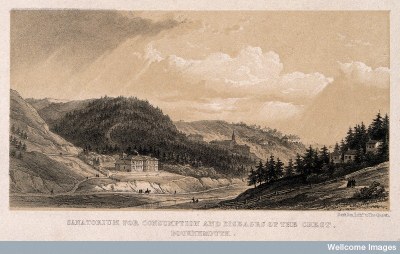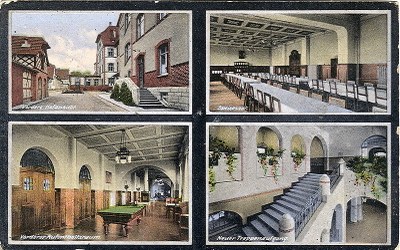Sanatoriums in Rural Locations


From the mid-19th century onward, "insane asylums" and sanatoriums for tuberculosis were typically established in "airy, wooded surroundings" rather than on the immediate outskirts of towns. However, this is less a reflection of a particular aim regarding leprosy than of the intensified discourse around the dangerous, "nervous" and pathogenic (big) city.
Above: Day & Son, Sanatorium for Consumption and Disease of the Chest, Bournemouth, lithograph, 9.4 x 17.6 cm; source: Wellcome Library, London, http://wellcomeimages.org/indexplus/image/V0012253.html, public domain.
Below: Sections of the Nuremberg sanatorium in Engelthal: front courtyard view - dining room - front lounge - new staircase, postcard, 1913, unknown author; source: Wikimedia Commons, private collection of Wolfgang Sauber, http://commons.wikimedia.org/wiki/File:Engelthal_-_Postcard.jpg, public domain.